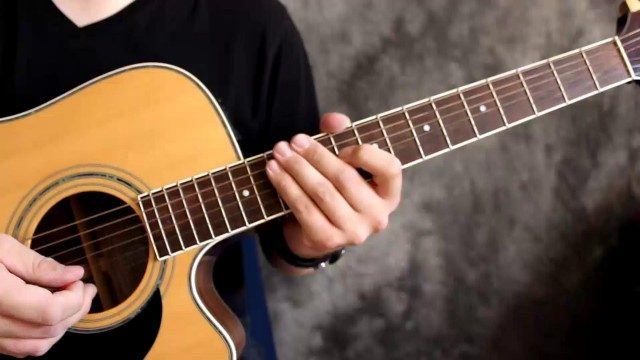So, let's try altering the strumming pattern so that this starts to sound a little more musical, as opposed to like exercises. The rhythm for the strum pattern is as follows:
| 1 | & | 2 | & | 3 | & | 4 | & |
| D | D | D | U | D |
U |
The main technique that we're going to address in this section, is called the "relief strum" - the final eighth note in each bar where we're given a split second to make the chord change. Chord changes in a strumming context, for the most part, are never made exclusively on the down-beat, but rather, during the last part of each measure, so that the new chord sounds as confident as possible on beat one.
So if you'll notice in the notation below, the final strum before each chord change is written as being all open-strings - this is merely to emphasize our "safe zone" for getting our new chord into position. This will be the preferred amount of time for making the transitions that we practiced in Part 1 so that the chord change happens quickly and sounds as natural as possible.
Practice each exercise at a tempo where you are able to make the change within the time span of one eighth note - whether it be 50BPM or 120BPM - consistency is EVERYTHING. Don't worry if you're overall tempo is slow, the issue we're attempting to eliminate is long pauses between each chord.
That's it for this month, folks! I hope you're able to address some issues you may be having with certain chord changes using these techniques, and enjoy!

















